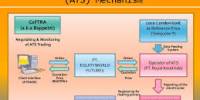The part of the annual profit of a company distributed among its shareholders is called dividend. It is a sum of money paid regularly (typically quarterly) by a company to its shareholders out of its profits (or reserves). A company’s dividend is decided by its board of directors and it requires the shareholders’ approval. However, it is not obligatory for a company to pay dividend. Dividend is usually a part of the profit that the company shares with its shareholders. The dividend is always declared by the company on the face value (FV) of a share irrespective of its market value. The rate of dividend is expressed as a percentage of the face value of a share per annum.
Definition of Dividend: The profit which a share holder gets (out of the profits of the company) for his investment from the company is called dividend.
After paying its creditors, a company can use part or whole of the residual profits to reward its shareholders as dividends. However, when firms face cash shortage or when it needs cash for reinvestments, it can also skip paying dividends. When a company announces dividend, it also fixes a record date and all shareholders who are registered as of that date become eligible to get dividend payout in proportion to their shareholding.
Rate of Dividend
The dividend rate is also called the payout rate and contrasts with the dividend yield. The dividend rate is expressed as an amount.
Meaning of the statement “r % $ 100 shares at $ P”
The statement r % $ 100 shares at $ P means the following:
- The face value of a share is $ 100.
- The market value of a share is $ P.
- The dividend (profit) on a share is r % on NV, i.e., $ r per annum.
- The income from one share for one year is $ r on $ P.
- Meaning of the statement “r % $ K shares at $ P”
The statement r % $ K shares at $ P means the following:
- The face value of a share is $ K.
- The market value of a share is $ P.
- The dividend (profit) on a share is r% on $ K, i.e., $ rK/100 per annum.
- The income from one share for one year is $ rK/100 on $ P.
For Example:
“20 % of $ 100 shares at $ 140” means that
- The face value of a share is $ 100.
- The MV of 1 share is $ 140.
- The dividend on 1 share is 20 % of $ 100 = $ 20 per annum.
- The income from on $ 140is $ 20 for one year.
Similarly, “25 % of $ 35 shares at a discount of $ 15” means that
- The NV of a share is $ 35
- The MV of 1 share is $ 35 – $ 15 = $ 20.
- The dividend on 1 share is 25 % of $ 35 = $ (25/100 x 35) = $ 8.75 per annum.
- The income from on $ 20 is $ 8.75 for one year.
Information Source:
















